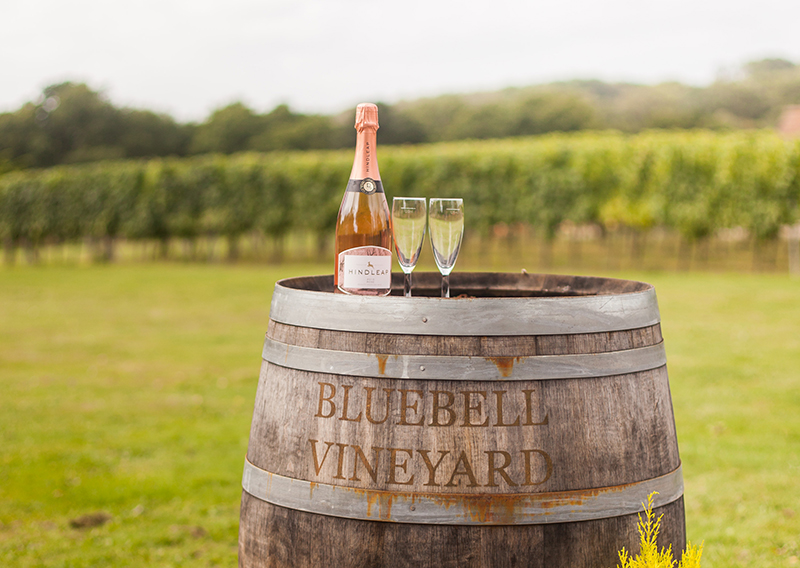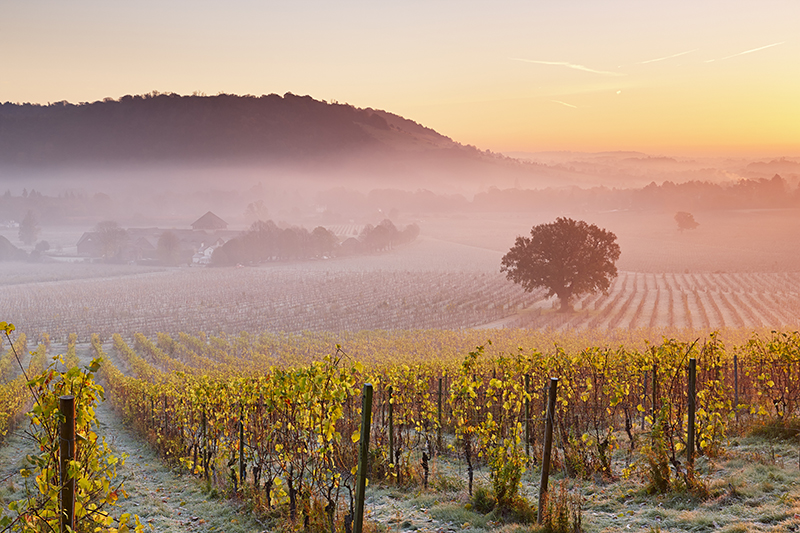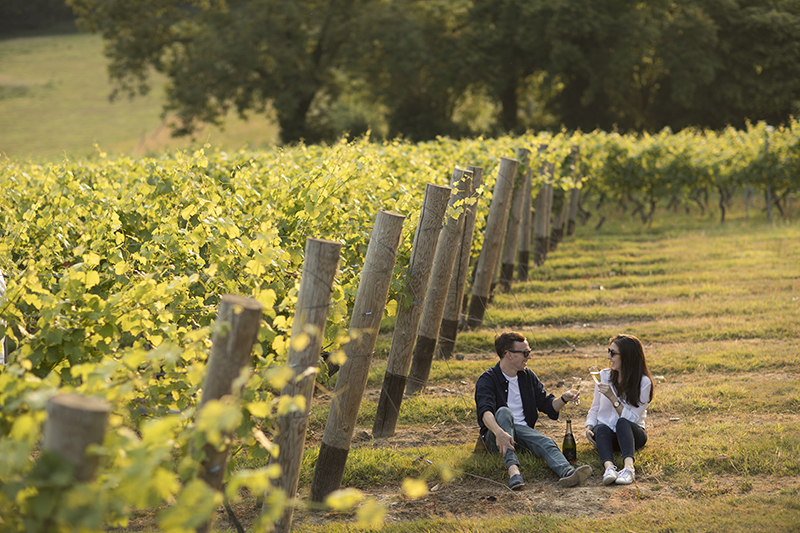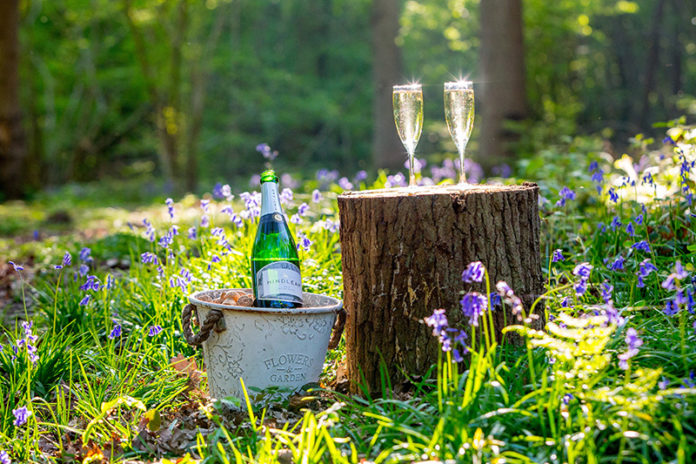From its ancient history to its modern renaissance, there’s more to English winemaking than you might expect
Words by Rebecca Hallett
In 1077, a monk named Gundulf travelled from Normandy to a small English city on the River Medway, to assume the bishopric of its derelict 400-year-old cathedral. He quickly set to work building a new cathedral, which still stands today, but he also established something else: a vineyard.
During Gundulf’s time as Bishop of Rochester, the order of Benedictine monks that he founded grew grapes alongside their other duties. In fact, Gundulf became so associated with his vineyards that a wine festival was held every year on the anniversary of his death. Eventually, of course, this tradition faded away – that is, until now.
In 2018, the Wine Garden of England Festival was held for the first time in over 1000 years, and there’s never been a better time to celebrate wine in the Southeast. Rows of vines may not be the first image that comes to mind when thinking of the English countryside, but in fact the area is full of vineyards, with around sixty in Kent, Sussex and Surrey alone.

But of course, quantity doesn’t necessarily equal quality. The real question must be: is it any good? The overwhelming consensus is that, yes, English wine is becoming a force to be reckoned with. And don’t just take it from the Brits; in 2017, the prestigious Champagne house Taittinger started planting a vineyard in Kent, under the name Domaine Evremond. When France starts to get involved, you know you’re making good wine.
In fact, sparkling wine is what the Brits do best, with British bubblies scooping up accolades over the past few years. All the big-hitting vineyards in the Southeast have an excellent sparkling wine or two to their name, from Hush Heath to Bluebell, and Ridgeview – which recently won Winemaker of the Year in the prestigious International Wine & Spirit competition – to Chapel Down, England’s leading wine producer. The area’s chalky soil and mild climate make it quite literally fertile ground for a good range of grapes, the most popular being Pinot Noir, Chardonnay and Bacchus, plus Pinot Meunier and Ortega.
“The main wines you will find are still and sparkling whites and rosés,” says Elisabeth Else, who established Wine Cellar Door, the only online guide to visiting English and Welsh vineyards (of which there were over 200 at her last count). She suggests that, though there’s not as much red wine produced here as further south – “and don’t go expecting big heavy reds, our climate simply won’t allow that kind of ripeness” – we are seeing more and more variety in what’s available. “We’ve reached a really exciting place in this country, where sparkling wine producers have proved they can make wines as good as those from Champagne, so now they want to make wines that express our terroir and their own personality. In the same way that Picasso’s early work was more realistic in style, or a musician learns the classical methods before he jams more creatively, English and Welsh wines are going through the same evolution.”

Though wine has been produced on a small scale for centuries, the first in this new wave of vineyards was established in 1969. Biddenden, still run by the same family fifty years on, has become highly respected, and plenty of others have now followed in their pioneering footsteps. The southeast of England is now full of vineyards, and the good news for visitors is that many are still small enough for you to get a real sense of how they’re run. In many cases, your tour guide will be someone who works to produce the wine.
Take Oastbrook, for example: a small, family-run vineyard in the Sussex countryside. It was only established in 2018, so while the vines grow they’re working with another winemaker to produce a limited number of sparkling wines. You can stay here in a hobbit house (as charming as it sounds), take a personal tour with the Anglo-Brazilian family and their dog to see how the vineyard is coming along, and admire the quirky oast house – a traditional building for drying hops – in which they live by the vines. It’s a fascinating way to get real insight into the industry, and the passion of the people who are entering it now.
A five-minute drive away, in the shadow of Bodiam Castle, you’ll find the 22-acre Sedlescombe estate, which produces only organic and biodynamic wines. Continue a little further – about half an hour’s drive – and you’ll come to Gusbourne, a winery known for its fine craftsmanship and quality. On your way back to Oastbrook you could stop off at Chapel Down to wander the vineyard and herb garden.

Clearly, the Southeast has an amazing density and variety of vineyards, offering you the chance to visit grand houses and sprawling estates, and see some of the country’s most bucolic countryside. As Elisabeth notes, “visiting a vineyard gives you a close-up view of the beautiful southeastern counties, and an opportunity to enjoy the product of that countryside. You’ll meet interesting people and taste delicious wines. It’s such a new industry here that it will make a great talking point when you get home, too!”
But unless you have a willing designated driver, or you only visit vineyards close enough for a wobbly walk down a country lane, getting between them can be tough. One option is to book a tour of several vineyards, or stay overnight at one of the estates.
Alternatively, you could plan a day trip from London – there’s nowhere else in the world with so many wineries so close to the capital. As an example, you could get a train from London St Pancras station to Ashford International in just 40 minutes, from where the venerable Biddenden vineyard is a 25-minute taxi journey. A couple of hours there, another 20-minute taxi ride, and you can be at Hush Heath, with woods, meadows and some great gastropubs to explore before you head to the tasting room to try the deliciously fresh Balfour Brut Rosé. Then, it’s just a short trip to Ashford International or Maidstone East for a train back into London.
Even if you’ve only got an afternoon to spare, you can visit a quintessentially English vineyard. A 20-minute train from London Bridge station to Sevenoaks and a 20-minute taxi, and you’re at Squerryes, part of a 2500-acre estate which has been in the same family for seven generations. There’s also a brewery on-site (Westerham), so anyone in your party who prefers beer will enjoy the trip too. They certainly live up to their motto: “Licet Esse Beatis”, or “permission to be joyful”.
A vineyard visit gives you a truly unique lens through which to learn about English history, cuisine, landscape and culture. As Elisabeth puts it, “whether you’re looking to choose wine for a wedding, have a lovely countryside stroll followed by a tasting, enjoy a delicious meal overlooking vines, talk technical with a winemaker or simply have a day out doing something new, there’s a vineyard to suit you.”
Some vineyards are open daily, while others arrange tours only with groups – always check in advance. The www.winecellardoor.co.uk website and app are invaluable, with a map and directory of every vineyard open to visitors in England and Wales.






 © 2024
© 2024